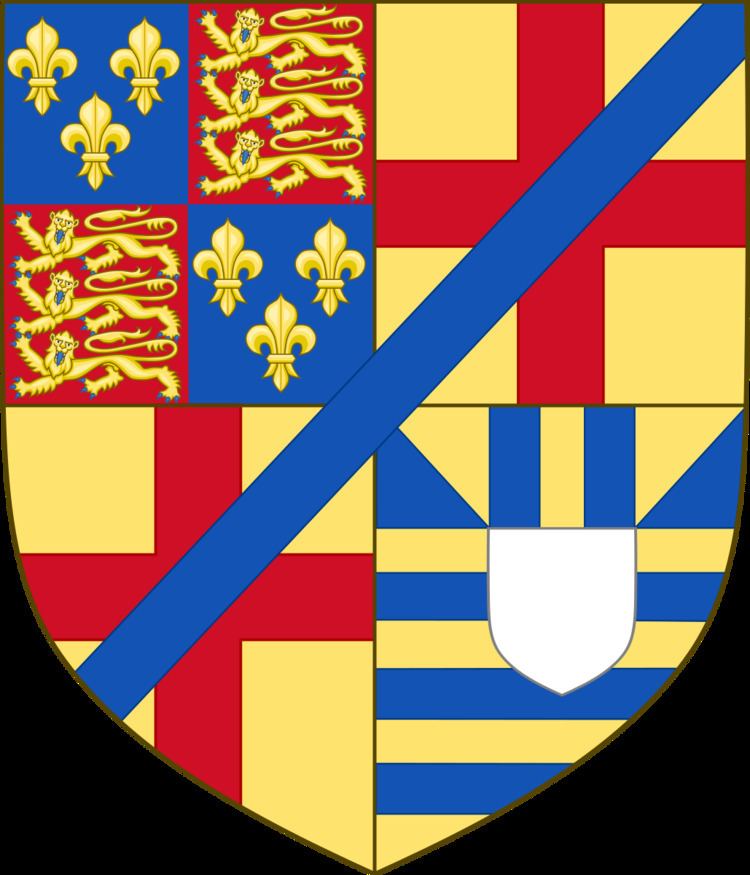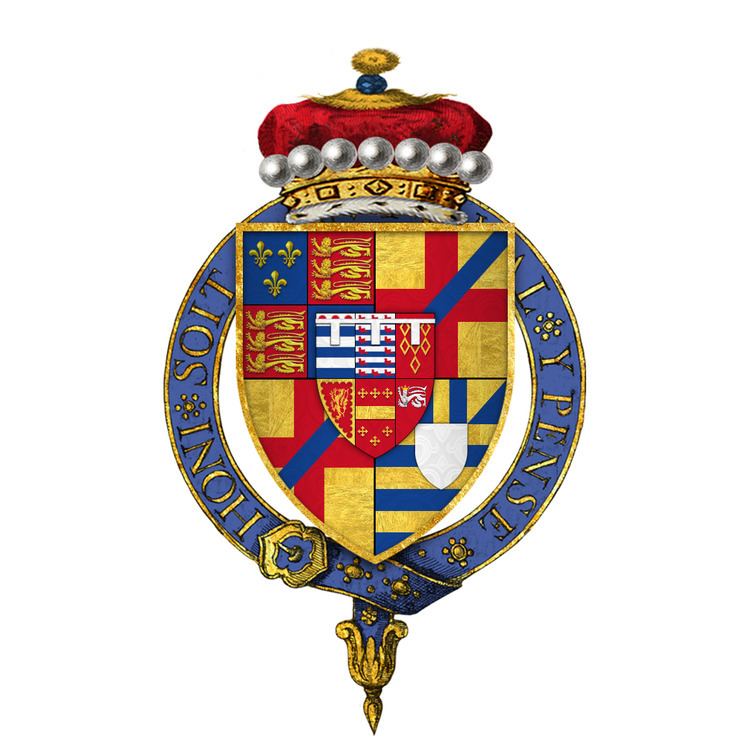Parents Edward IV of England Name Arthur 1st | Mother Elizabeth Wayte | |
 | ||
Died March 3, 1542, London Borough of Tower Hamlets, London, United Kingdom Spouse Honor Plantagenet, Viscountess Lisle (m. 1529–1542), Elizabeth Grey, 6th Baroness Lisle (m. 1511) Grandparents Richard of York, 3rd Duke of York, Cecily Neville, Duchess of York Cousins Edward Plantagenet - 17th Earl, Margaret Pole - Countess, Edward of Middleham - Prince of, John de la Pole - 1st Earl of Li, Edmund de la Pole - 3rd Duke of S Similar People Edward IV of England, Richard III of England, Honor Plantagenet - Viscounte, Richard of York - 3rd Duke of Y, Edward Plantagenet - 17th Earl | ||
Arthur Plantagenet, 1st Viscount Lisle, KG (died 3 March 1542) was an illegitimate son of King Edward IV, half-brother of Queen Elizabeth of York, and thus an uncle of King Henry VIII, at whose court he was a prominent figure and by whom he was appointed Lord Deputy of Calais (1533–40). The survival of a large collection of his correspondence in the Lisle Letters makes his life one of the best-documented of his era.
Contents

Biography
Arthur Plantagenet was born between 1461 and 1475 in Calais, which was then an English possession in France. He died at the Tower of London, where he is buried. The identity of his mother is uncertain; the most likely candidate appears to be the "wanton wench" Elizabeth Wayte, although the historical record is spotty on this issue, and it is not entirely clear that Wayte is distinct from another of Edward's mistresses, Dame Elizabeth Lucy. Another possible candidate is Elizabeth Shore. His godfather was William FitzAlan, 16th Earl of Arundel.
He spent his childhood at the court of his father Edward IV. How he passed his youth after his father's death in 1483 is not known. In 1501 he joined the household of his half-sister, the queen consort Elizabeth of York, and moved to the household of Henry VII after her death in 1503. After the accession of his nephew Henry VIII in 1509, he was formally designated an Esquire of the King's Bodyguard and was a close companion of Henry's (despite the age difference).
In 1514 he was appointed High Sheriff of Hampshire and made captain of the Vice-Admiral's ship Trinity Sovereign, rising to become Vice-Admiral of England. In 1519 he and his wife, Elizabeth Grey Baroness Lisle, took possession of the lands that had belonged to her father (her brother and niece having both died). In 1520, he attended his nephew, King Henry VIII, at the Field of Cloth of Gold.
On 25 April 1523, Arthur Plantagenet was created Viscount Lisle. He was also selected Privy Councilor, Governor of Calais, and Lord Warden of the Cinque Ports and named as Constable of Calais after the death of John Bourchier, 2nd Baron Berners on 16 March 1533.
Constable of Calais
The Lisle Letters suggest that as Constable he was honest and conscientious but not especially competent. Among the letters is one from Thomas Cromwell rebuking him for referring trivial matters back to the king and Council, criticising him for his inability to refuse a favour to anyone who asks for one, and hinting that Lady Lisle's dominance of him has made him something of a laughing stock. Yet the Crown did not hesitate to employ him on routine errands: in 1537 Queen Jane Seymour during her pregnancy developed a passion for quail, and since quail were abundant in the marshes around Calais, Lisle devoted much time to supplying them to the Queen.
Imprisonment and death
In 1540 several members of the Plantagenet household in Calais were arrested on suspicion of treason, on the charge of plotting to betray the town to the French. Suspicion unavoidably fell upon Arthur as well, and he was recalled to England and eventually arrested on 19 May 1540.
The actual conspirators were executed, but there was no evidence connecting Arthur with the plot. Nevertheless, he languished in the Tower of London for two years until the king decided to release him. However, upon receiving news that he was to be released he suffered a heart attack and died two days later. The 18th-century historian Francis Sanford commented "Henry VIII's Mercy was as fatal as his Judgments".
Lisle Letters
During his time at Calais, Arthur and his wife had to manage much of their affairs outside Calais by correspondence. Copies of 3,000 of these letters were seized as evidence after Arthur was arrested. They survive in the Public Record Office, and were published in abridged form as the Lisle Letters, becoming a valuable historical resource for a critical period in English history.
Marriages and children
Arthur Plantagenet married twice, producing children by his first wife only.
His first marriage was on 12 November 1511 to Elizabeth Grey (died 1529), daughter of Edward Grey, 1st Viscount Lisle (died 1492). She was the widow of Edmund Dudley, treasurer to King Henry VII, who had been executed in 1510 by Henry VIII. The next day the king granted Arthur some of the Dudley estates which had come to the crown due to Dudley's attainder. By Elizabeth he had three daughters:
Secondly, in 1529 as her second husband, he married Honor Grenville (1493–1566) the daughter of Sir Thomas Grenville (died 1513) of Stowe in the parish of Kilkhampton, Cornwall, by his wife Isabella Gilbert. She was the widow of Sir John Bassett (died 1528) of Umberleigh, Devon. Arthur had no children by Honor, but he helped to bring up her children, including John Basset, who became the husband of his daughter Frances from his first marriage; Anne Bassett, an alleged mistress of Henry VIII, and Elizabeth Bassett, a royal maid-of-honour also known as Mary Bassett.
